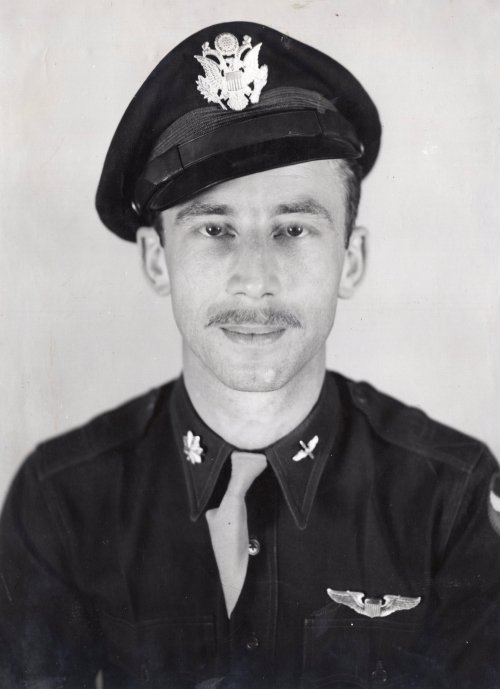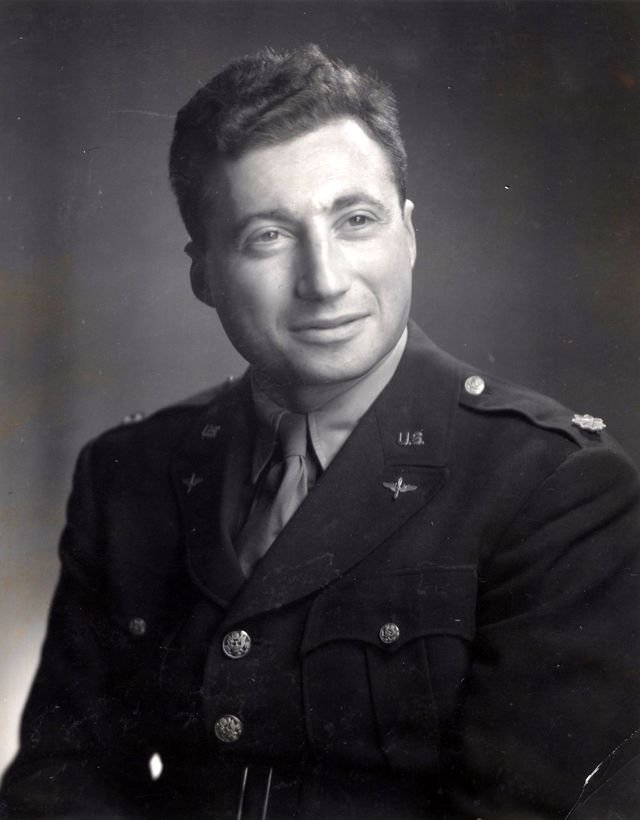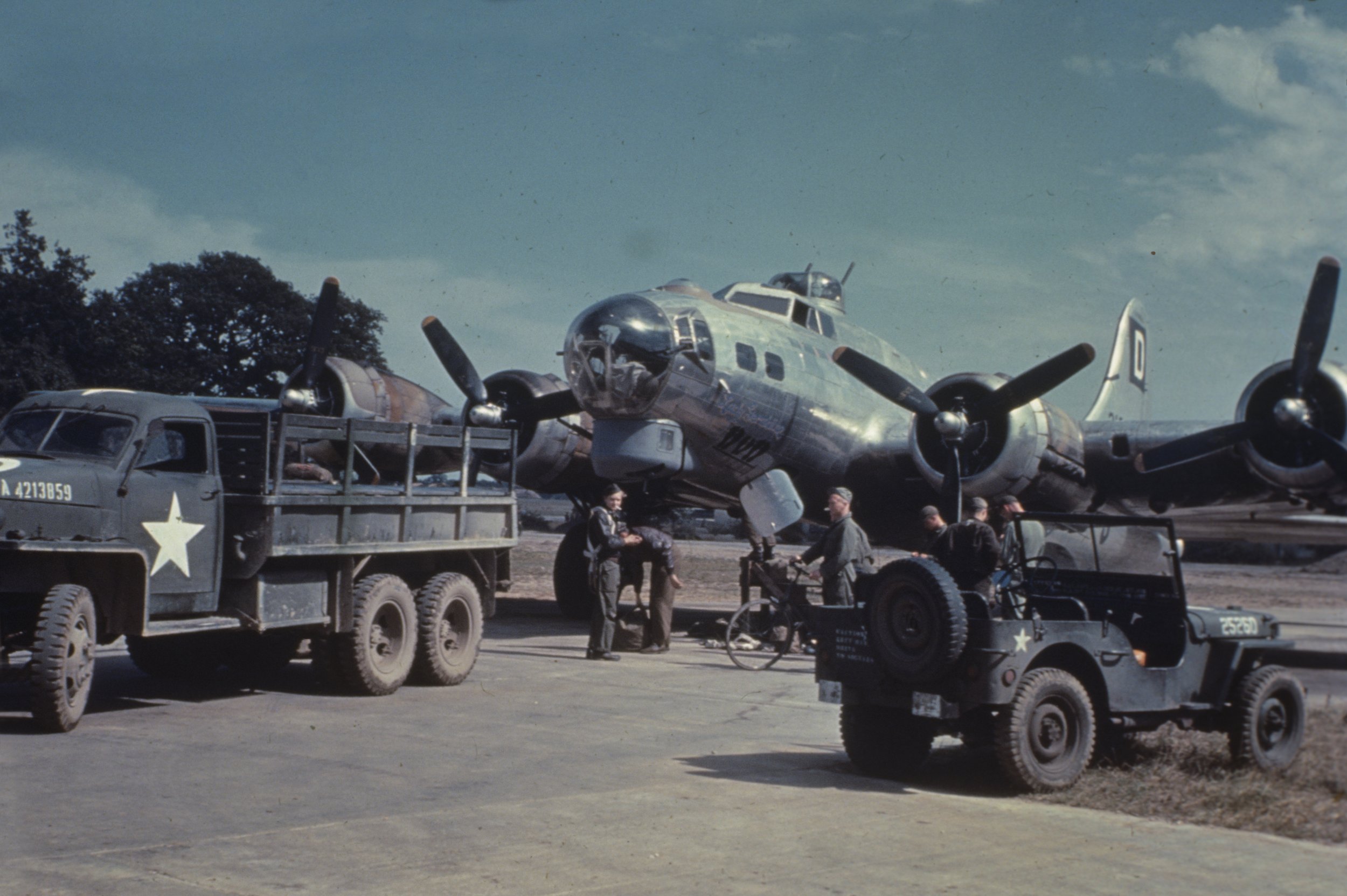Film Review: Masters of the Air
/The long-awaited and anticipated series on the United States Army Air Forces’ Eighth Air Force, produced by Steven Spielberg and Tom Hanks, is now fully released on Apple+.
PHoto: Apple TV+
By Seth Marshall
For the past ten years, news has periodically surfaced of a third World War II miniseries produced by Steven Spielberg and Tom Hanks which would focus on the 8th Air Force’s bombing campaign and would serve as a successor to The Pacific and Band of Brothers. Masters of the Air was filmed during 2021 and has now been fully released on Apple+. Readers be aware, some spoilers follow below.
The series focuses on the 100th Bombardment Group, which became known as the “Bloody Hundredth” during the course of the daylight bombing campaign over Europe with the 8th Air Force. While the show does cover the Group’s involvement throughout the war, the most intense periods of combat which are detailed in the show come during the late summer and fall of 1943, when the Eighth Air Force was not yet the titanic force it would become in 1944, but was sustaining high losses in raids on targets such as Schweinfurt and Regensburg. Wisely the producers chose to focus on characters who in one way or another were present for the entire series; Austin Butler portrays Major Gale ‘Buck’ Cleven and Callum Turner plays Major John “Bucky” Egan, who were both best friends that survived being shot down during the war. Anothy Boyle portrays Major Harry Crosby, who serves as the series’ narrator, and whose memoir provided a major influence on the production. Nate Mann portrays Lieutenant Colonel Robert ‘Rosie’ Rosenthal, an officer with a story so compelling he could have had his own film made about just him- a Jewish attorney from Brooklyn, Rosie not only completed the required 25 missions, he volunteered for a second tour and had completed 52 missions when he was shot down and spent the rest of the war making his way back to the UK via Soviet-occupied territory.
Major gale cleven continued to serve in the postwar air force, retiring in 1963 as a colonel. he passed away in 2006 at age 87 (photo: wikipedia).
major john egan during world war ii. egan later flew combat missions over korea, reached the rank of colonel, and died of a heart attack in 1961 (photo: wikipedia).
Lieutenant colonel robert ‘rosie’ rosenthal, who completed 52 missions during the war and later served as a prosecutor during the nuremburg trials after the war. rosie passed away in 2007 at the age of 89. (photo: wikipedia)
harry crosby left the usaaf after the war in 1945 as a lieutenant colonel, and became a professor after the war. in 1993, his memoir “on a wing and a prayer” was released, and would become one of the sources for “masters of the air”. Crosby died in 2010 at age 91. (photo: 100th Bombardment group association)
The series was filmed in several locations: a disused Royal Air Force (RAF) airfield at Abingdon stood in for the 100th’s base at Thorpe Abbotts, a replica POW camp was built in Bovingdon, and a warehouse served as the location where multiple B-17 fuselage segments were used to shoot in-flight sequences, using greenscreen backdrops which were later filled-in with computer effects. The old barracks and base structures at Abingdon, which has many features unchanged since the Second World War, was augmented with the construction of several buildings for scenes on the airfield, including a control tower and Nissan huts. Other scenes were filmed in and around London and Oxford.[1] [2]
PHoto of two b-17 replicas located on hardstands at raf abingdon (Photo: ww2truslow.com)
B-17F replica suspended from a filming rig at raf abingdon (photo: ww2truslow.com).
an air raid shelter recreated along a london street during filming. (photo: ww2truslow.com)
Despite the series’ attempts to strive for historical accuracy, there are problems in the series. One of the more noticeable (to aviation enthusiasts and historians) errors is the constant presence of B-17F models in the series. The B-17F was the model which was heavy use by the Eighth Air Force in much of 1943, including during many of the intense scenes occurring during the late summer and fall of 1943, such as the infamous Schweinfurt raids. However, the series errors in showing this model in constant use throughout the war. In reality, the new and improved B-17 model, the “G”, began to be introduced in late 1943 to address the shortcomings of the “F” model. The “G” was visually quite distinguishable from the “F”, as it had a Bendix twin .50-cal machine gun turret mounted in a “chin” position on the nose. This turret had been requested as a standard feature of future B-17s after experiments in 1943 showed that a powered, gyro-stabilized turret could provide accurate defensive fire to more significant ranges than previous hand-held .50-cal machine guns in flexible mounts in the Plexiglas nose, and played a significant role in reducing the risk of frontal attacks by Luftwaffe fighters. B-17Gs also had an improved tail gun position which used a Cheyenne-designed turret, the waist gunner positions were redesigned so that the left and right were staggered rather than directly across from one another, reducing the amount that the gunners would bump into one another during combat, and Plexiglas screens were added to the waist windows to protect the gunners from the icy slipstream. By the time of Big Week and the infamous raid on Berlin on March 6, 1944, most of the 100th BG’s B-17s would have been “G” models.
an early b-17g of the 100th bomb group- note the chin turret, which became a feature on nearly every b-17 entering service in 1944. (photo: american air museum)
The cheyenne tail turret which replaced the original position on the b-17f, and which would have featured on nearly all 100th bomb group b-17s beginning in early 1944. (photo: American air museum)
Several other errors visible in the series are tactical in nature- in Episode 7, during the raid on Berlin, hundreds of P-51 Mustang escorts are shown flying very close to the bombers before engaging German fighters. This was not a practice for escorting fighters on any side for the majority of the entire Second World War; aside from flying close to the bombers negating any tactical advantage the fighters could achieve, for American fighter pilots it would have been exceptionally dangerous- bomber gunners could not visually distinguish friendly fighters from enemy fighters much beyond a thousand yards, and made a practice of opening fire on any fighter which turned towards the bombers.[3] In several instances, bombers appear to be hit by German fighters either fired from fighters, on in the case of ‘Rosie’ Rosenthal’s plane in Episode 9, by what appears to be a Surface-to-Air Missile (SAM). In reality, air-to-air rockets were fired by Luftwaffe fighters usually approaching from the rear of a formation because of the technological limitations of the rockets, and even then the rockets were usually used to try and break up the cohesion of formations- few direct hits were achieved because of the inaccuracy of these weapons. SAMs did exist in World War II, but only in experimental form- the Germans were working on several versions of this new technology, but none were deployed during the war.[4] There are other errors as well, which have been captured and detailed by enthusiasts and historians on social media, including the YouTube Channel “WWII US Bombers”, who has made several detailed videos citing 8th Air Force historical documents on errors within the show.[5] Some of the errors are understandable to an extent- the casual observer will have no prior knowledge of historical concepts such as radar-bombing using H2X, mixed bomb payloads, and German fighter tactics- many of the errors will have been allowed either in the name of dramatic affect or because of budgetary reasons. However, considering the purpose of the series was to present an authentic representation of the daylight bombing campaign as experienced by one of the more storied units in the 8th Air Force, some of the producers’ choices seem questionable.
Aside from historical inaccuracies, I think there were some missteps in terms of the story telling and production. One major characteristic of the Band of Brothers series which was not continued in either the Pacific or more concerningly in Masters of the Air was that there was no explanation of the events of the episode. At the end of Episode 3, the producers could have told the audience the details behind the mission- that it cost the USAAF 60 bombers and more than 600 crewmen killed, wounded or missing, and that Lt. Biddick, who had been a main character up to that point, was killed along with his co-pilot when his stricken bomber crashed in Germany. Inexplicably, there is no summary at the end of the series of the daylight campaign as the epilogues of the characters are revealed. This would have been the prime point to tell the audience the total cost of the 8th Air Force incurred during nearly three years of combat over Europe- from August 1942 until April 1945, the USAAF had suffered over 47,000 casualties, including over 26,000 killed in action, and had lost over 5100 aircraft of all types.[6] I believe that this was the biggest missed opportunity in the series.
Another issue in many scenes of the show is the quality of the CGI. Despite the budget of the show and amount purportedly spent on accurately depicting B-17s with computers, there are a number of scenes, particularly when B-17s are moving around on the ground, which look completely unbelievable- in multiple scenes where the B-17s are taxiing, they move too quickly, vibrate and shudder as if they are much lighter than they really are, and on many occasions simply look too fake. The last major production which portrayed B-17s was the 1990 film Memphis Belle, which had many of its own issues (such as the mission, events of the mission and crew all being different from that of the actual Memphis Belle), but it did use several very real B-17s during filming, along with multiple real P-51s (incorrectly, as the movie was set in May 1943), and several Spanish Buchon fighters standing in for German Me-109s. For all its faults, the aerial sequences in Memphis Belle, and the use of real B-17s moving on the ground gave the film a more real feel than Masters of the Air. Quite understandably, the massive formations and clashes of German fighters against bombers can’t be very well depicted without CGI, but there is certainly something to be said for using real aircraft. Unfortunately, part of the problem today is that there are not as many airworthy B-17s as there were in 1990. But surely a real B-17 could have been motion-captured to provide more accurate models for CGI to be based upon.
So where does the series sit? In terms of telling the stories from several of the famous figures involved with the 100th Bombardment Group, the series portrays the experiences of the airmen well. However, the audience is left with a less than impressive understanding of the whole picture- where the daylight bombing campaign fit into the Allied war effort, how many pilots and aircrew became casualties, how many civilians were killed or affected during the campaign, and the tangible impact of the bombing campaign on the outcome of the war. Many of these issues were touched upon during scenes in the series, but some kind of summary with hard statistics would have served to underscore its dramatic heft. Personally, I am disappointed with some of the inaccuracies and some of the choices made by the producers, but overall I enjoyed the series. It portrayed the course of the daylight bombing campaign relatively accurately, did a better job than “The Pacific” of presenting real, compelling characters through the entire series, and has shown a light on aspect of the war which generally receives much less attention than combat on the ground or even many of the battles at sea. And if the series has caused more viewers to become interested in the subject, read up more on the 8th Air Force, and find out what their grandparents or great-grandparents did over 80 years ago, then by any measure it should be considered a success.
A b-17g of the 100th bomb group undergoes maintenance in summer 1944.
1. Hemenway, Megan. “How Masters of the Air’s Flight Scenes Were Filmed & How Much Was CGI.” ScreenRant, 26 Jan. 2024, screenrant.com/how-masters-of-the-air-flight-scenes-filmed-cgi/.
2. Storey, Mara Truslow. “Filming for WWII Mini-Series Masters of the Air Is Underway. Sharing the Ultimate Crowdsourced Photo Dump from Set.” The Mighty 8th Air Force at Shipdham, 12 Apr. 2022, ww2truslow.com/2022/03/14/wwii-mini-series-masters-of-the-air-is-done-filming-the-ultimate-crowdsourced-photo-dump-from-set/.
3. US WWII Bombers. “Masters of the Air–Why Are the P-51 Mustangs Escorts Flying so Close and Why so Many?” YouTube, YouTube, 11 Mar. 2024, www.youtube.com/watch?v=awZ9G7dikuM.
4. “Masters of the Air–Rocket Usage, Shooting down Bombers with Questionable Weapons and Tactics.” YouTube, YouTube, 22 Mar. 2024, www.youtube.com/watch?v=w--NO0NTjOI.
5. “WWII US Bombers.” YouTube, YouTube, www.youtube.com/@WWIIUSBombers. Accessed 16 Apr. 2024.
6. “Eighth Air Force History.” 8th Air Force/J-GSOC, www.8af.af.mil/About-Us/Fact-Sheets/Display/Article/333794/eighth-air-force-history/. Accessed 16 Apr. 2024.
[1] https://screenrant.com/how-masters-of-the-air-flight-scenes-filmed-cgi/
[2] https://ww2truslow.com/2022/03/14/wwii-mini-series-masters-of-the-air-is-done-filming-the-ultimate-crowdsourced-photo-dump-from-set/
[3] https://www.youtube.com/watch?v=awZ9G7dikuM
[4] https://www.youtube.com/watch?v=w--NO0NTjOI
[5] https://www.youtube.com/@WWIIUSBombers
[6] https://www.8af.af.mil/About-Us/Fact-Sheets/Display/Article/333794/eighth-air-force-history/











